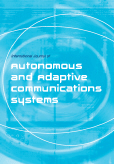
International Journal of Autonomous and Adaptive Communications Systems
Scope & Guideline
Fostering Knowledge in Autonomous and Adaptive Communication
Introduction
Aims and Scopes
- Autonomous Communication Systems:
Research on communication systems that operate with minimal human intervention, employing algorithms and protocols that enable self-management and decision-making. - Adaptive Algorithms and Techniques:
Innovative methodologies for enhancing communication systems' performance through adaptive algorithms that adjust to varying conditions, such as network load and environmental factors. - Wireless Sensor Networks (WSN) and IoT:
Focus on the integration of WSN with the Internet of Things (IoT), addressing challenges such as energy efficiency, data security, and communication protocols. - Data Security and Privacy:
Exploration of techniques for securing communication systems, including encryption, authentication, and privacy-preserving data sharing. - Machine Learning and Artificial Intelligence in Communication:
Utilization of machine learning and AI techniques to improve communication processes, anomaly detection, and predictive analytics within communication networks. - 5G and Beyond Technologies:
Investigation into the next generation of communication technologies, including 5G, their architectures, performance, and applications in diverse fields.
Trending and Emerging
- Energy Efficiency in Communication Systems:
With the increasing demand for sustainable technologies, research focusing on energy-efficient techniques, particularly in 5G and IoT environments, is gaining significant attention. - Advanced Anomaly Detection Techniques:
There is a rising trend in developing sophisticated anomaly detection methods using deep learning and other advanced analytics to enhance security and reliability in communication systems. - Collaborative and Distributed Systems:
Emerging research on collaborative frameworks for communication systems, such as decentralized networks and cooperative algorithms, is becoming more prominent as systems evolve to be more interconnected. - Privacy-Preserving Technologies:
In light of growing concerns over data privacy, studies focusing on privacy-preserving techniques, particularly in data sharing and retrieval, are increasingly relevant and sought after. - Integration of AI and Machine Learning:
The integration of artificial intelligence and machine learning into communication systems is a major area of growth, focusing on optimizing performance, network management, and user experience.
Declining or Waning
- Traditional Data Transmission Techniques:
Research on conventional data transmission methods is becoming less prominent as newer technologies and adaptive methods take precedence, particularly in the context of 5G and IoT. - Static Network Models:
The focus on static or rigid network models is declining, as there is a growing need for dynamic and flexible systems that can adapt to real-time conditions. - Basic Security Protocols:
Studies centered on fundamental security protocols without considering advanced techniques such as machine learning or blockchain are waning, as the need for sophisticated security measures increases. - Single-Channel Communication Systems:
Research primarily focused on single-channel communication systems is diminishing in favor of multi-channel and complex systems that offer improved performance and reliability. - Non-Adaptive Algorithms:
The relevance of non-adaptive algorithms is decreasing, as the industry trends toward solutions that offer adaptability and resilience in changing environments.
Similar Journals

Journal of Electronics & Information Technology
Illuminating Pathways in Electronics and Information TechnologyJournal of Electronics & Information Technology, published by the prestigious Chinese Academy of Sciences, Institute of Electronics, stands as a vital resource in the field of Electrical and Electronic Engineering. With an ISSN of 1009-5896, this journal has been dedicated to the dissemination of advanced research and innovative applications since its inception in 2001. It holds a competitive position within its category, ranked Q3 in the 2023 Scopus database, reflecting its contribution to the scientific community. The journal addresses a wide array of topics related to electronics and information technology, making it indispensable for researchers, professionals, and students aiming to stay at the forefront of technological advancements. Although it operates under a traditional model of access, its cumulative output remains pivotal for knowledge sharing and innovation in the rapidly evolving landscape of electronic engineering. With its commitment to excellence, the Journal of Electronics & Information Technology aims to foster a thriving academic environment and promote impactful research within the discipline.

EURASIP Journal on Wireless Communications and Networking
Empowering Research in Wireless CommunicationsThe EURASIP Journal on Wireless Communications and Networking, published by Springer, stands as a pivotal platform dedicated to advancing the field of wireless communications and networking. With an ISSN of 1687-1472 and E-ISSN of 1687-1499, this Open Access journal has been disseminating high-quality research since 2004, ensuring broad accessibility for scholars and professionals worldwide. Maintaining an esteemed position in the academic community, it is classified in the Q2 quartile for 2023 across critical categories including Computer Networks and Communications, Computer Science Applications, and Signal Processing. The journal's performance is reflected in its Scopus rankings, which place it in the 73rd percentile for Computer Networks and Communications and the 72nd percentile for both Computer Science Applications and Signal Processing. With a focus on innovative research and practical applications, the EURASIP Journal is an essential resource for anyone seeking to contribute to or stay informed in the dynamic landscape of wireless communication technology.

IEEE Communications Surveys and Tutorials
Unveiling Innovations in Communications for Future GenerationsIEEE Communications Surveys and Tutorials is a premier journal published by the IEEE-INST ELECTRICAL ELECTRONICS ENGINEERS INC, renowned for its insightful contributions to the field of communications engineering. Since its inception in 2005, this journal has become an authoritative source of comprehensive surveys and instructional materials addressing current trends and advancements in communication technologies. With an impressive Q1 ranking in Electrical and Electronic Engineering, it ranks first among 797 journals in its category, placing it firmly in the 99th percentile according to Scopus metrics. Researchers, professionals, and students alike benefit from its well-researched articles, making it an essential resource for those seeking to deepen their understanding or stay updated on cutting-edge innovations. Although it does not currently operate as an open-access outlet, the journal's commitment to excellence ensures that each publication is a valuable asset for the academic community.
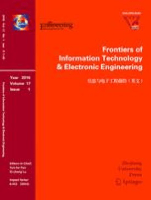
Frontiers of Information Technology & Electronic Engineering
Exploring New Horizons in Information Technology and EngineeringFrontiers of Information Technology & Electronic Engineering, published by Zhejiang University Press, is a leading academic journal dedicated to advancing the fields of information technology and electronic engineering. With an impressive impact factor and categorized in the Q2 quartile across multiple fields including Computer Networks and Communications, Electrical and Electronic Engineering, Hardware and Architecture, and Signal Processing, this journal serves as a crucial platform for researchers and practitioners to disseminate cutting-edge research and innovations. The journal, which operates under an Open Access model, ensures that high-quality research is accessible to a global audience, fostering collaboration and knowledge sharing within the scientific community. Based in Hangzhou, China, and in operation since 2015, it has rapidly established itself as a reputable source of scholarly articles, ranking in the top percentiles in its respective categories with commendable Scopus rankings. By bridging academic research and practical applications, Frontiers of Information Technology & Electronic Engineering plays a pivotal role in shaping the future of engineering and technology.
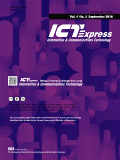
ICT Express
Fostering Global Collaboration in Computational SciencesICT Express is a leading open-access journal published by Elsevier that has established itself at the forefront of the fields of Artificial Intelligence, Computer Networks and Communications, Hardware and Architecture, Information Systems, and Software. Since its inception in 2015, this South Korea-based journal has provided a vital platform for disseminating innovative research and practical applications across these rapidly evolving domains. With an impressive impact factor and consistently high Scopus rankings—placing it in the top quartiles of its categories—it attracts contributions from both seasoned experts and emerging scholars. Current access options ensure that groundbreaking findings are readily available to a global audience, thus fostering collaboration and advancement in technology and computational sciences. As ICT continues to reshape various industries, the significance of research published in ICT Express is crucial for staying ahead in the digital landscape.
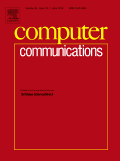
COMPUTER COMMUNICATIONS
Pioneering Research in Communication ProtocolsCOMPUTER COMMUNICATIONS is a premier journal published by Elsevier, covering cutting-edge research in the field of computer networks and communications. With an impressive 2023 Scopus ranking placing it in the 95th percentile and classified as Q1 in its category, this journal embodies the forefront of technological advancement and scholarly excellence. Since its inception in 1978 and poised to continue until 2024, COMPUTER COMMUNICATIONS serves as an essential platform for disseminating high-impact research that advances our understanding of computer networking protocols, architectures, and applications. Although it is not an open-access publication, the journal provides various access options to ensure that its findings are widely circulated among researchers, professionals, and students. Through rigorous peer review and a commitment to fostering innovation, COMPUTER COMMUNICATIONS plays a vital role in shaping the future of communication technologies.

Ad Hoc & Sensor Wireless Networks
Connecting ideas and innovations in wireless networks.Ad Hoc & Sensor Wireless Networks, an esteemed journal published by OLD CITY PUBLISHING INC, provides a dedicated platform for the dissemination of pioneering research in the realms of computer science, electrical and electronic engineering, and instrumentation. With an ISSN of 1551-9899 and an E-ISSN of 1552-0633, this journal has established itself as a crucial resource for scholars and practitioners alike, actively contributing to the advancements in ad hoc networks and wireless sensor technologies. It holds a commendable position within the third quartile in its respective fields, with Scopus rankings reflecting its relevance in the academic community. As a publicly accessible source of valuable insights, the journal aims to inspire innovation and facilitate progress across various disciplines. Situated in Philadelphia, PA, and converging its efforts from 2005 to 2024, Ad Hoc & Sensor Wireless Networks continues to be a beacon of research excellence, impacting both theoretical and practical domains in technology.
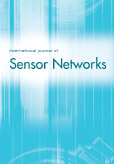
International Journal of Sensor Networks
Unveiling Cutting-edge Discoveries in Sensor NetworksInternational Journal of Sensor Networks, published by INDERSCIENCE ENTERPRISES LTD, is a pivotal resource in the realms of Computer Networks and Communications, Computer Science Applications, Control and Systems Engineering, and Electrical and Electronic Engineering. With an ISSN of 1748-1279, this journal serves as a vital platform for disseminating innovative research and developments related to sensor networks, highlighting groundbreaking work that spans from fundamental sensor technology to sophisticated applications in various engineering fields. The journal, which operates without an open access model, features a convergence of contributions from 2006 to 2024, holding a Q3 ranking across multiple categories as per the 2023 categorization, which reflects its standing and influence within the academic community. Targeted at researchers, professionals, and students, the International Journal of Sensor Networks not only fosters interdisciplinary dialogue but also drives the advancement of technology by publishing quality papers that address contemporary challenges in sensor networks and their applications.
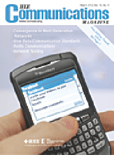
IEEE COMMUNICATIONS MAGAZINE
Unveiling Trends in Computer Networks and ApplicationsIEEE Communications Magazine, published by the Institute of Electrical and Electronics Engineers (IEEE), is a leading journal in the fields of Computer Networks and Communications, Computer Science Applications, and Electrical and Electronic Engineering. With an impressive impact factor reflected in its Q1 quartile rankings across multiple categories, this periodical stands at the forefront of technological advancement and innovation. Since its inception in 1979, the magazine has been committed to disseminating high-quality research and insightful reviews that address current issues in communications technology. Targeting an audience that includes researchers, industry professionals, and students, IEEE Communications Magazine strives to foster a deeper understanding of emerging trends and challenges in the communications sector. Its affiliation with IEEE, a global leader in advancing technology, underlines the journal's credibility and significance in supporting scholarly communication in electrical and electronic engineering. The magazine operates without open access options, necessitating subscription or institutional access for its comprehensive content.

International Journal of Electrical and Computer Engineering Systems
Exploring the Frontiers of Technology and SystemsInternational Journal of Electrical and Computer Engineering Systems is a prominent publication dedicated to the advancement of knowledge and innovation within the rapidly evolving fields of electrical engineering and computer science. Published by J J Strossmayer University of Osijek, Faculty of Electrical Engineering, this journal is committed to providing a platform for researchers and professionals to disseminate high-quality research and share groundbreaking findings. With an ISSN of 1847-6996 and an E-ISSN of 1847-7003, the journal spans a range of topics including Computer Networks and Communications, Electrical and Electronic Engineering, and Hardware and Architecture. As noted in the 2023 assessments, it holds a category quartile ranking of Q4 across these relevant disciplines. Despite its current Q4 standing in Scopus rankings—with the journal positioned at the lower percentiles—it remains a vital resource for academics looking to explore emerging trends and applications in electrical and computer engineering systems from its home country of Croatia. The journal’s ongoing development from 2016 to 2024 reflects its evolving scope and the commitment to encouraging scholarly contributions. Researchers and students alike will find the **International Journal of Electrical and Computer Engineering Systems** an invaluable repository of information and a catalyst for further research in their fields.